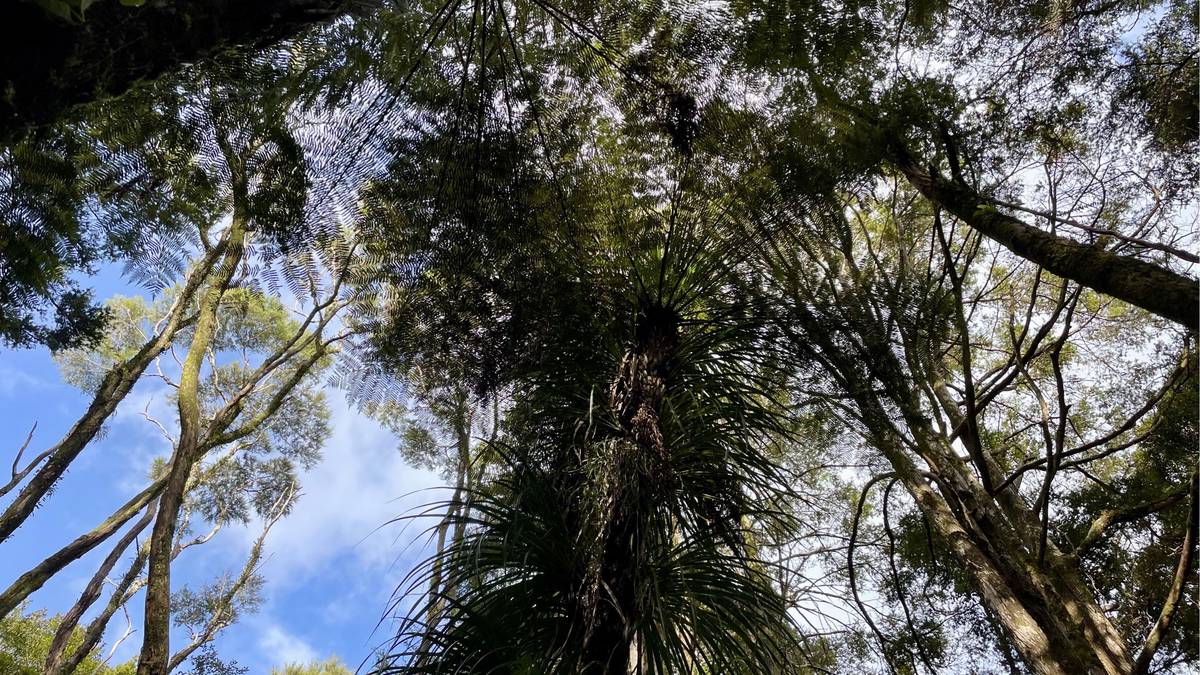“Just a few weeks ago, our valley was alive with the sound of kiwi calling. Now there’s silence,” said Brad Windust, founding trustee of Bay Bush Action following the discovery of six dead kiwi in the Ōpua Forest. Photo / Supplied
Dogs are suspected to be behind the deaths of six kiwi at Ōpua Forest in the last fortnight, with dog owners urged to prevent their pets from roaming and keep them out of kiwi zones.
The two latest deaths were discovered on Sunday morning, and were yesterday being sent to the lab for investigation by the Department of Conservation (DoC).
Footage from cameras operated by Bay Bush Action has identified two different roaming dogs in the forest.
Lara McDonald, DoC’s acting operations manager for the Bay of Islands, said they were considering using dog traps in the area where dogs had been recorded and were “working on it” alongside the Far North District Council.
Advertisement
According to DoC, dogs frequently kill adult kiwi, and any breed of dog can kill a kiwi, mainly because they lack a breastbone.
McDonald said the first death in this spate was likely caused by a canine, with lab results pending.
Investigations of the next three, including DNA sampling, were also still under way.
Since May in the Bay of Islands area alone, DoC has counted a total of 10 kiwi deaths suspected to be dog-related due to puncture wounds and other signs.
Advertisement
McDonald said “many dead kiwi are not reported, so these records do not indicate the full extent of the impact of people and predators on kiwi populations”.
As for the recent increase in adult kiwi deaths across Northland, McDonald said it could be due to the colder weather and current time of dusk around 5.30pm.
“People getting home from work may be letting their dogs out for exercise without accompanying them and keeping them under control.”
Bay Bush Action – the community trust which carries out pest control in the Bay of Islands forest near Paihia in order to protect kiwi – said they were working with DoC to find the dog or dogs before more kiwi were killed.
The Far North District Council had also been contacted for information about local dogs to help narrow the search.
Emma Craig, a dog specialist at Save the Kiwi, described the Sunday discoveries as “fresh kills” and acknowledged Northland’s feral dog problem – but was clear they weren’t the only culprits.
“Farming dogs, hunting dogs, and even pets have been reported as killing kiwi and other vulnerable wildlife,” Craig said.
“The current predation event in Ōpua Conservation Area looks like it’s likely being caused by one or more wandering domestic dogs.”
“They’ve gotten a taste for kiwi and they’re returning to the same place over multiple nights to hunt.”
In the past 12 years, the forest’s kiwi population had risen from none to at least 22 birds, but today not a single call can be heard.
Advertisement
That’s according to Bay Bush Action, who described the recent events as shocking and said they believed it was likely more kiwi had met the same fate.
Founding trustee and volunteer Brad Windust said the team was devastated.
“Just a few weeks ago, our valley was alive with the sound of kiwi calling. Now there’s silence. It’s heartbreaking.”
Windust said kiwi should live for 50 years.
“But in Northland, on average, they only live for 14 years because of dogs.”
“That’s like us dying at 22 years old.”
Advertisement
/cloudfront-ap-southeast-2.images.arcpublishing.com/nzme/IXZTVJQF5JCWDOIL3OK4BWBVMA.jpeg)
Windust said he believed the group was “probably only finding a 10th or less of the actual kiwi that have been killed”.
He was clear that roaming dogs were the major problem, and said the dogs of unprofessional pig hunters also posed a threat.
“We know that once a dog has a taste for kiwi, there’s no stopping it. It’s like a fox in a chicken coop.”
“So, as the kiwi population increases, just one roaming dog can wreak absolute havoc.”
“It’s terrifying to think how quickly our painstaking work can be undone through careless dog ownership.”
He said social and behaviour changes were required, “so that according to social norms, it’s simply no longer acceptable to let dogs roam”.
Advertisement
“Owning a dog is a privilege – not a right. And certain responsibilities to your community come with that privilege.”
The group also said AI cameras – which allow for immediate detection of a dog – were becoming widespread in surveillance amongst conservation groups around the country.
The cameras use a combined set of technologies to lure invasive predators with sound and light, observe using a thermal camera and eliminate positively identified predators.
Bay Bush Action sought two cameras from The Cacophony Project, and were currently working to fundraise the required $6,680 to add surveillance to their work.
Windust described one of the recently-killed birds as “a huge, beautiful breeding female – the biggest I’ve ever seen”.
“I decided to call her Tuakana when I saw her because she was probably the founder of the population. She had survived stoats and cats only to meet her death by an out-of-control dog.”
Advertisement
Save the Kiwi’s Craig said it was possible that at least half, if not most, of the local kiwi population had been wiped out.
“When you consider that if a kiwi can live its expected 50-60 years and could produce two to four chicks every year, this level of loss will be devastating for the population.”
“When 10 healthy kiwi of breeding age are killed in quick succession, that has a significant impact on the kiwi population.
“It will take many, many years to recover.”
Craig pleaded with dog owners to take greater responsibility for their pets and “do what it takes to never let them meet a kiwi”: keeping them on a lead, reading signs, keeping them away from areas where kiwi are known to live and keeping them tied up or in kennels at night.
She urged the public to report wandering dogs to the council.
Advertisement
According to DoC, the maximum penalties are up to three years in prison, or a fine of $20,000 and destruction of the dog.
McDonald said Northland was bucking the national trend, with rising and indeed thriving kiwi populations in areas with good predator and dog control.
“The recent spate of kiwi killed by dogs suggests we’ve slipped, and we need to remain vigilant. With kiwi living literally in people’s backyards in Northland, we can’t be complacent.”
She reminded the public about kiwi and bird aversion training, a tool to help reduce the threat dogs pose to ground-dwelling birds. To learn more about avian awareness and avoidance training, visit: doc.govt.nz.
Noel Garcia is a reporter at the Age with a special interest in social, health and environmental issues. She is most inspired by sharing stories of the Far North’s people and their passions. She began reporting for NZME in 2021.




